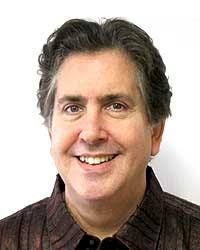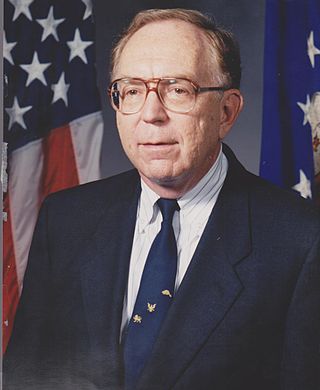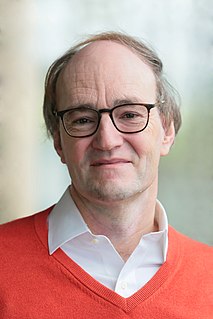Related Research Articles

Douglas Bruce Lenat is the CEO of Cycorp, Inc. of Austin, Texas, and has been a prominent researcher in artificial intelligence; he was awarded the biannual IJCAI Computers and Thought Award in 1976 for creating the machine learning program, AM. He has worked on machine learning, knowledge representation, "cognitive economy", blackboard systems, and what he dubbed in 1984 "ontological engineering". He has also worked in military simulations, and numerous projects for US government, military, intelligence, and scientific organizations. In 1980, he published a critique of conventional random-mutation Darwinism. He authored a series of articles in the Journal of Artificial Intelligence exploring the nature of heuristic rules.
Computer science is the study of the theoretical foundations of information and computation and their implementation and application in computer systems. One well known subject classification system for computer science is the ACM Computing Classification System devised by the Association for Computing Machinery.

Edward Albert Feigenbaum is a computer scientist working in the field of artificial intelligence, and joint winner of the 1994 ACM Turing Award. He is often called the "father of expert systems."
In artificial intelligence, symbolic artificial intelligence is the term for the collection of all methods in artificial intelligence research that are based on high-level symbolic (human-readable) representations of problems, logic and search. Symbolic AI used tools such as logic programming, production rules, semantic nets and frames, and it developed applications such as knowledge-based systems, symbolic mathematics, automated theorem provers, ontologies, the semantic web, and automated planning and scheduling systems. The Symbolic AI paradigm led to seminal ideas in search, symbolic programming languages, agents, multi-agent systems, the semantic web, and the strengths and limitations of formal knowledge and reasoning systems.
Data engineering refers to the building of systems to enable the collection and usage of data. This data is usually used to enable subsequent analysis and data science; which often involves machine learning. Making the data usable usually involves substantial compute and storage, as well as data processing and cleaning.
Terence Aidan (Terry) Halpin is an Australian computer scientist who is known for his formalization of the Object Role Modeling notation.

Object-role modeling (ORM) is used to model the semantics of a universe of discourse. ORM is often used for data modeling and software engineering.
Clive Finkelstein is an Australian computer scientist, known as the "Father" of information engineering methodology.
A blackboard system is an artificial intelligence approach based on the blackboard architectural model, where a common knowledge base, the "blackboard", is iteratively updated by a diverse group of specialist knowledge sources, starting with a problem specification and ending with a solution. Each knowledge source updates the blackboard with a partial solution when its internal constraints match the blackboard state. In this way, the specialists work together to solve the problem. The blackboard model was originally designed as a way to handle complex, ill-defined problems, where the solution is the sum of its parts.
A knowledge-based system (KBS) is a computer program that reasons and uses a knowledge base to solve complex problems. The term is broad and refers to many different kinds of systems. The one common theme that unites all knowledge based systems is an attempt to represent knowledge explicitly and a reasoning system that allows it to derive new knowledge. Thus, a knowledge-based system has two distinguishing features: a knowledge base and an inference engine.
Gerardus Maria "Sjir" Nijssen is a Dutch computer scientist, former professor of computer science at the University of Queensland, consultant, and author. Nijssen is considered the founder of verbalization in computer science, and one of the founders of business modeling and information analysis based on natural language.
Gennady Simeonovich Osipov was a Russian scientist, holding a Ph.D. and a Dr. Sci. in theoretical computer science, information technologies and artificial intelligence. He was the vice-president of the Institute for Systems Analysis of the Russian Academy of Sciences, professor at the Moscow Institute of Physics and Technology, and at Bauman Moscow State Technical University. Osipov has contributed to the Theory of Dynamic Intelligent Systems and heterogeneous semantic networks used in applied intelligent systems.
NORMA is a conceptual modeling tool that implements the object-role modeling (ORM) method.
The following is provided as an overview of and topical guide to databases:
Henderik Alex (Erik) Proper is a Dutch computer scientist, an FNR PEARL Laureate, and a senior research manager within the Computer Science (ITIS) department of the Luxembourg Institute of Science and Technology (LIST). He is also adjunct professor in data and knowledge engineering at the University of Luxembourg. He is known for work on conceptual modeling, enterprise architecture and enterprise engineering.
Ryszard S. Michalski was a Polish-American computer scientist. Michalski was Professor at George Mason University and a pioneer in the field of machine learning.
This glossary of artificial intelligence is a list of definitions of terms and concepts relevant to the study of artificial intelligence, its sub-disciplines, and related fields. Related glossaries include Glossary of computer science, Glossary of robotics, and Glossary of machine vision.

Boi Faltings is a Swiss professor of artificial intelligence at École Polytechnique Fédérale de Lausanne.
Neuro-symbolic AI integrates neural and symbolic AI architectures to address complementary strengths and weaknesses of each, providing a robust AI capable of reasoning, learning, and cognitive modeling. As argued by Valiant and many others, the effective construction of rich computational cognitive models demands the combination of sound symbolic reasoning and efficient machine learning models. Gary Marcus, argues that: "We cannot construct rich cognitive models in an adequate, automated way without the triumvirate of hybrid architecture, rich prior knowledge, and sophisticated techniques for reasoning.". Further, "To build a robust, knowledge-driven approach to AI we must have the machinery of symbol-manipulation in our toolkit. Too much of useful knowledge is abstract to make do without tools that represent and manipulate abstraction, and to date, the only machinery that we know of that can manipulate such abstract knowledge reliably is the apparatus of symbol-manipulation."
References
- ↑ Pastor, Oscar, and Juan Carlos Molina. Model-driven architecture in practice: a software production environment based on conceptual modeling. Springer Science & Business Media, 2007.
- ↑ Elmasri, Ramez. Fundamentals of database systems. Vol. 2. Pearson Education India, 2007.
- 1 2 "Tony Morgan, Professor at INTI International University," at linkedin.com. Accessed 02-03-2015.
- 1 2 Dr. Tony Morgan, profile at newinti.edu. Accessed 02-03-2015.
- ↑ Morgan, Tony. "Accuracy in qualitative descriptions of behaviour." Proceedings of the 22nd conference on Winter simulation. IEEE Press, 1990.
- ↑ Morgan, Tony. "Competence and responsibility in intelligent systems." Artificial intelligence review 6.2 (1992): 217-226.
- 1 2 3 Morgan (2002, summary)
- ↑ Morgan (2002, p. 23)
- ↑ Tony Morgan at DBLP Bibliography Server